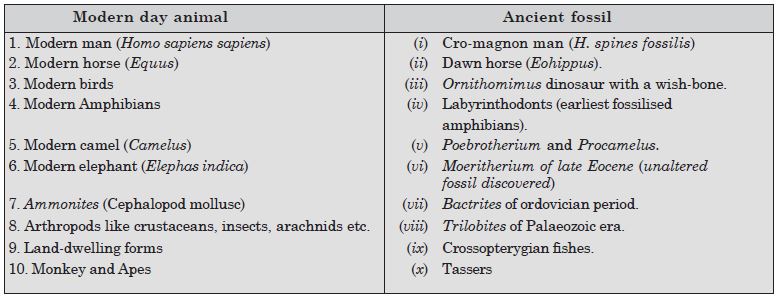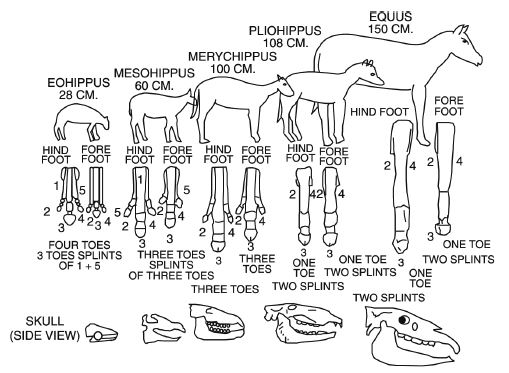Question 1:
Explain antibiotic resistance observed in light of Darwinian selection theory.
Answer:
Antibiotics were considered to be very effective against disease causing bacteria. But within two or three years of introduction of antibiotic, new antibiotic resistant bacteria appeared in the population. Sometimes a bacterial population happens to contain one or a few bacteria having mutations or inbuilt variations which make them resistant to the antibiotic. Such resistant bacteria survive and multiply quickly as the competing bacteria have died. Soon the resistance providing genes become widespread and entire bacterial population becomes resistant. Antibiotic resistance may be achieved within a week as bacteria have generation of only 20 minute.
Question 2:
Find out from newspapers and popular science articles any new fossil discoveries or controversies about evolution.
Answer:
Fossils of Dinosaurs have been unearthed to reveal evolution of reptiles in Jurassic period. It further led to the evolution of birds and mammals. Recently, fossils of shark-toothed reptiles from Sahara deserts have been discovered. Fossils of flying birds with teeth in the jaws has been discovered.
Question 3:
Attempt giving a clear definition of the term species.
Answer:
The members of a species resemble structurally and functionally are able to interbreed freely and produce fertile offspring of their own kind and share a common gene pool.
Question 4:
Try to trace the components of human evolution.
Answer:
During human evolution, ancestral human types had undergone a number of remarkable changes in
their brain size (cranial cavity), skeletal features, dietary preference, etc., as shown in
the following table:

Question 5:
List a few modern day animals and from internet link to corresponding ancient fossil. Name both.
Answer:

Question 6:
Describe one example of adaptive radiations.
Answer:
Adaptive radiation. It is the process of divergent evolution in which members of the same
ancestral species of a large taxonomic group are evolved along different lines in different
habitats of same geographical area.
Example. Darwin’s Finches are an example of adaptive radiations. There were many varieties
of small black birds in the Galapagos Islands. Darwin reasoned that after originating from a
common seed-eating stock, the finches must have radiated to different geographical locations
in the same island and undergone adaptive changes, especially in the type of beak. Living in
isolation for long, the new kinds of finches emerged that could survive and function in the
new habitats.
Question 7:
Can we call human evolution as adaptive radiation?
Answer:
No, we cannot call human evolution as adaptive radiation. It is the case of descent with modification in which more advanced types are evolved from the simple forms. In case of human evolution there appears to be parallel evolution of human brain and language.
Question 8:
Using internet and discussing with your teacher, trace the evolutionary stages of any one animal say horse.
Answer:
The major evolutionary trend of horses:
(i) General increase (with occasional decrease) in size.
(ii) Progressive loss of toes.
(iii) Lengthening of toes that are retained.
(iv) Lengthening of limbs in general.
(v) Enlargement of brain (especially cerebral hemisphere).
(vi) Increase in the height.
(vii) Increase in the complexity of molar teeth and an enlargement of the last two and,
eventually, the last three premolars until they came to resemble molars.

Top row shows change in form and size of the body. Second row show reduction lateral toes of
hind and forelimbs. The right figure in each set of two is of the forefoot, the left of the
hindfoot. Third row shows change in form and size of skull.
